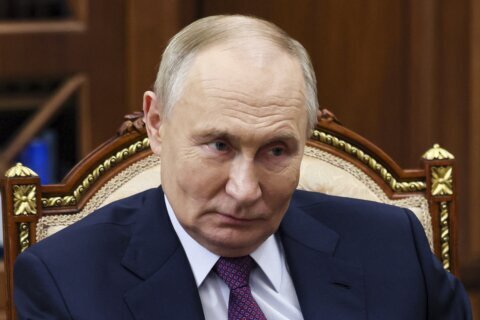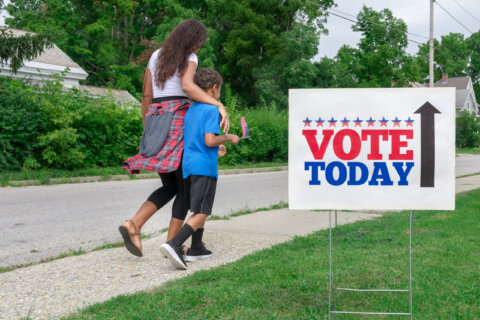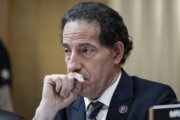Western governments eagerly approved and even pushed for the adoption of South Korean children for decades, despite evidence that adoption agencies were aggressively competing for kids, pressuring mothers and bribing hospitals, an investigation led by The Associated Press has found.
Now adults, many of those children have since discovered that their adoption paperwork was untrue. Their quest for accountability has spread far beyond Korea’s borders to the Western countries that claimed them, and is upending international adoption.
The AP, in collaboration with Frontline (PBS), spoke with more than 80 adoptees in the U.S., Australia and Europe and examined thousands of pages of documents to reveal evidence of kidnapped or missing children ending up abroad, fabricated names, babies switched with one another and parents told their newborns were gravely sick or dead, only to discover decades later they’d been sent to new parents overseas.
Here are the findings:
Some Western governments pressured South Korea to keep sending babies
South Korea’s adoption program started with the unwanted children of Korean women and Western soldiers from the 1950-53 Korean war, and then included the children of single mothers, the poor and others. In the West, access to birth control and abortion had caused the supply of domestically adoptable babies to plummet, and Western families were desperate for Korean children.
In 1974, South Korea tried to stop adoptions to Scandinavia, after its political rival, North Korea, charged that children were “being sold like animals in the foreign land.” South Korean government records from the time show that diplomats from Sweden, Denmark and Norway began begging for babies.
“The adoption of Korean orphans by Swedish parents is not because Korea is neglecting its orphans, but because Swedish couples without children are desiring to adopt them, so it would be good to continue the transfers of orphans,” the Swedish ambassador said in a meeting with South Korea’s deputy foreign minister in January 1975.
South Korean Health Minister Ko Jae-pil wrote in a report that the countries sent nine pleas for adoptions to continue, citing at least 1,455 requests for Korean children. Ambassadors visited Korean officials multiple times and “have kept badgering by sending diplomatic documents” that practically threatened halted adoptions would damage relations, the report says. One wrote that he was “concerned that the public opinion against South Korea would worsen” if they halted adoptions to Scandinavia.
Under pressure, South Korea reversed course.
“Accepting the strong requests by related nations to resume adoptions is considered to promote international friendships,” Ko wrote in 1975.
The foundational role of the United States
The United States pioneered the adoption system in South Korea, when an evangelical Christian farmer from Oregon named Harry Holt believed he’d received a calling from God to save Korean War orphans. He soon began flying children from Korea to the United States by the planeload for adoption by Christian American families.
Holt’s program grew into the largest adoption agency in South Korea, sending thousands of children to the West.
In the 1970s, humanitarians on the ground expressed alarm that adoption was becoming a competitive business, that agencies were foraging for children. But U.S. officials processed visas allowing them to leave South Korea by the hundreds a month. A concerned social worker wrote in a 1976 document that U.S. officials were processing adoptions in a “callous” and “assembly line type method.”
There were few safeguards to ensure that children adopted to the U.S. were truly orphans. Federal officials issued visas for the children, but their adoptions were finalized by thousands of local courthouses across the country — many of which did not require proof that the children were truly abandoned or relinquished by their parents.
Holt International Children’s Services denies systemic problems
Susan Soonkeum Cox, a longtime executive at the company, said she rejects allegations that agencies were competing for children, and the company’s goal was always to find homes for children who would otherwise have grown up in orphanages.
Cox was among the first group of adoptees brought to the United States by Holt, in 1956. She said that when she began working with the agency in the 1970s, there were still an overwhelming number of abandoned children, and the company frantically searched to find homes for them.
Holt is today a well-respected agency, and has called for stricter safeguards in the international adoption industry.
How are Western governments responding?
The model created in South Korea was replicated all over the world. Now the stories of adoptees have forced many European countries to face a reckoning over their role in international adoptions.
The Netherlands in May announced it would no longer allow its citizens to adopt from abroad. Denmark’s only international adoption agency said it was shutting down, Sweden stopped adoptions from South Korea and Norway is investigating. Switzerland apologized for failing to prevent illegal adoptions. France in March released a scathing assessment of its own culpability.
The U.S., the pioneer of this system and long the country to adopt the most foreign orphans, has not analyzed its own accountability, and some have questioned why. The State Department said questions from AP over several months prompted it to try to piece together its history from archives. An early review found that widespread practices in Korea at the time “may have resulted in adoptions based on falsified documentation” but no indication yet that officials were aware of it.
—-
This story is part of an ongoing AP investigation in collaboration with Frontline into Korean adoption fraud. The investigation includes stories on an adoption machine that sent hundreds of thousands of Korean children overseas, an interactive and the upcoming documentary South Korea’s Adoption Reckoning, premiering Sept. 20 on PBS & online.
Copyright © 2024 The Associated Press. All rights reserved. This material may not be published, broadcast, written or redistributed.






